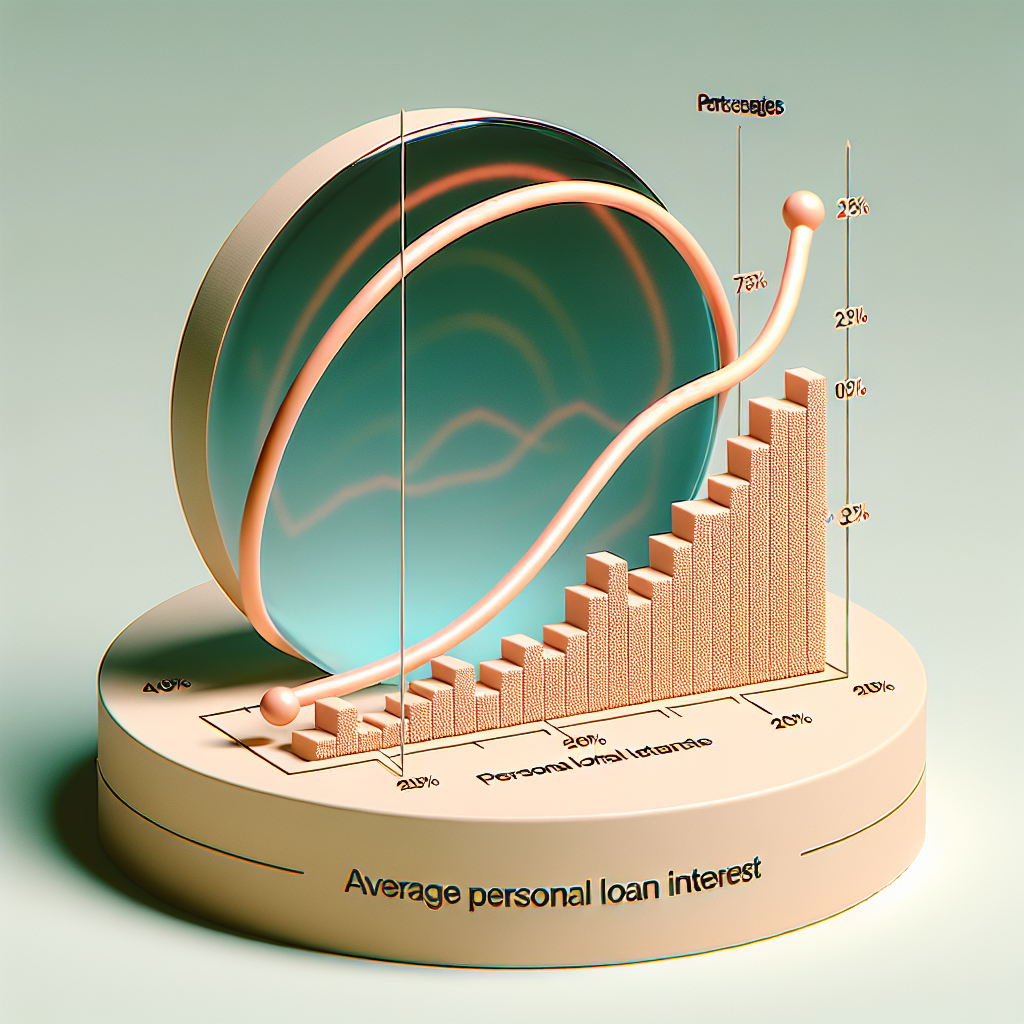
Average personal loan interest
The Basics of Personal Loans: An Overview
In today's financial landscape, personal loans are increasingly becoming a favored option for individuals seeking quick access to funds. Unlike traditional bank loans, personal loans are generally unsecured, which means borrowers do not need to collateralize their assets. This article will delve into various aspects of personal loans, focusing on average personal loan interest rates, the factors that influence these rates, and tips for securing the best terms.
What is a Personal Loan?
A personal loan is a type of installment loan that allows borrowers to access a set amount of money, which they can repay over a specified period. These loans can be used for a variety of purposes, including:
- Debt consolidation
- Medical expenses
- Home improvements
- Major purchases
- Unexpected financial emergencies
The Average Personal Loan Interest Rate Explained
The average personal loan interest rates can vary significantly based on multiple factors. According to recent reports, as of October 2023, the average interest rate for a personal loan hovers around 10-12%. However, it's essential to recognize that this is an average; individual rates may range from as low as 6% to as high as 36%. Factors that impact interest rates include:
1. Credit Score
Your credit score is one of the most critical factors lenders consider when determining your interest rate. A higher credit score typically corresponds to a lower interest rate, as it indicates to the lender that you are a less risky borrower. Conversely, a lower credit score may lead to higher rates or even difficulty in securing a loan.
2. Loan Amount
The total amount you wish to borrow can also affect the interest rate. Lenders may offer different rates based on their internal policies regarding different loan sizes. For larger loans, rates might be more competitive, whereas smaller loans may come with higher interest rates due to the fixed costs associated with issuing them.
3. Loan Term
The length of time over which you plan to repay the loan can impact your interest rates as well. Generally, shorter-term loans will have lower overall interest, but monthly payments will be higher. In contrast, longer-term loans usually have higher interest rates, spreading costs over time but resulting in a more expensive loan overall.
4. Lender Type
Different types of lenders also have varied rates. Traditional banks often offer lower rates compared to online lenders or credit unions. However, credit unions may provide competitive rates for their members. Therefore, it is crucial to compare offers across different lender types.
5. Economic Conditions
The overall state of the economy can play a significant role in determining average personal loan interest rates. When the economy is strong, interest rates may rise due to increased demand for loans and higher inflation. Conversely, during economic downturns, rates may drop to encourage borrowing.
How to Secure the Best Personal Loan Rates
While understanding factors influencing interest rates can help, there are also strategies borrowers can employ to secure the most favorable terms. Here are some tips to consider:
1. Improve Your Credit Score
Before applying for a loan, take the time to review your credit report and correct any inaccuracies. Make timely payments, reduce existing debt, and refrain from opening new credit lines before applying for your personal loan.
2. Shop Around
Don’t settle for the first offer you receive. Comparing rates from multiple lenders can help you find the best deal. Online comparison tools can be quickly utilized to assess various rates in one place.
3. Consider a Co-Signer
If you’re struggling with a low credit score, getting a co-signer can be beneficial. A co-signer with a strong credit history can substantially lower your interest rate by reassuring the lender of loan repayment.
4. Opt for Shorter Terms
While shorter-term loans come with higher monthly payments, they often also have lower interest rates overall. Consider your budget to determine if you can manage the higher payments for the benefit of a lower rate.
5. Evaluate Fixed vs. Variable Rates
Understanding the difference between fixed and variable interest rates can also guide your decision. Fixed rates remain constant throughout the life of the loan, while variable rates can fluctuate based on economic conditions. Depending on the market trends, you might lean towards one over the other.
Personal Loan Refinancing: A Viable Option
Another strategy to consider—especially if you are already in a personal loan—is refinancing. By refinancing, you can potentially secure a more favorable interest rate, especially if your credit score has improved since your initial loan. Here’s what to think about:
1. Evaluate Your Current Loan
Assess the terms of your existing loan to see if refinancing makes sense. Consider the total amount left to pay, the interest rate, and any penalties associated with paying off the balance early.
2. Calculate Potential Savings
Before committing to a new loan, conduct a cost-benefit analysis to determine how much you could save by refinancing. Use online calculators to assist with this process.
3. Choose the Right Time to Refinance
Economic factors can influence interest rates. It’s advisable to refinance when average personal loan interest rates are lower than what you initially secured. Staying informed about financial news can guide your timing.
Conclusion: Understanding Personal Loans and Their Costs
Personal loans can serve as a valuable financial tool when used wisely. Understanding factors affecting average personal loan interest rates, such as credit score, loan amount, and other considerations, empowers borrowers to make informed decisions. By improving credit scores, shopping around for the best offers, and considering refinancing options, individuals can secure favorable loan terms that align with their financial goals.
References
For additional information and resources regarding personal loans and financial literacy, consider checking reliable sources such as:
- The Federal Trade Commission (FTC)
- Consumer Financial Protection Bureau (CFPB)
- Your local credit unions and banks for personalized advice
By Guest, Published on July 22nd, 2024